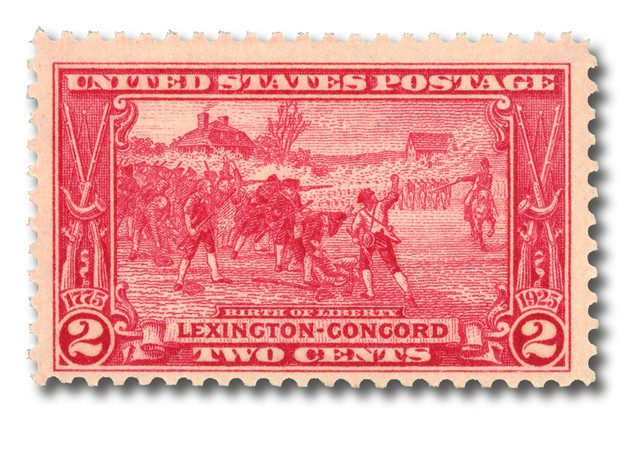
The first battles of the American Revolutionary War were fought on April 19, 1775 at Lexington and Concord. The American colonists’ brave stand showed the British, and the world, how dedicated they were to the cause of independence.
As resentment grew against their British governors, the colonists realized they might have to fight for fair treatment. Farmers, craftsmen, and shopkeepers began to organize and prepare for possible conflict. In the spring of 1775, British troops gathered in Boston. The colonials stored arms at nearby Concord, and drilled and readied themselves to fight “at a minute’s notice.”
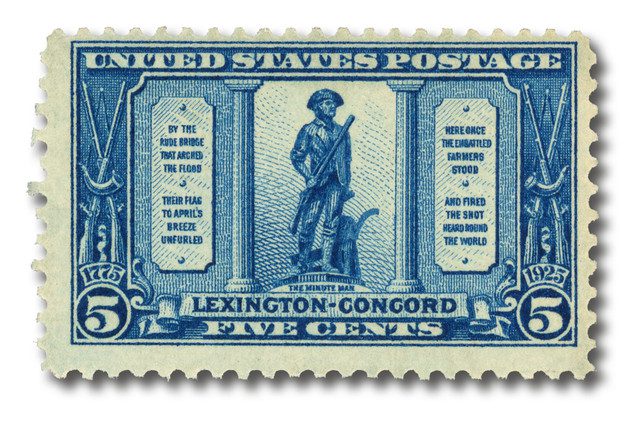
As it turned out, that’s about all the notice the aptly named minutemen had. Due to unrest in the American colonies, British General Thomas Gage received orders to use force against the defiant colonials. Consequently, Lieutenant Colonel Francis Smith led a British column from Boston to seize the gunpowder of the Massachusetts Provincial Congress at Concord on the night of April 18, 1775. Their first stop was Lexington, headquarters of two famous leaders of the rebellion – Samuel Adams and John Hancock.
But the patriot underground in Boston sent messengers to spread the alarm. William Dawes, a tanner of shoe leather, and Paul Revere, a well-known silversmith, galloped through the night toward Lexington by different routes. Shouting, “The regulars are coming!” they woke minutemen in houses along the way. Patriots hurried out to face British troops in defense of their freedom.
After Revere reached Lexington (and warned Adams and Hancock to hide), the town bell tolled, signal guns boomed, and a band of about seventy militia and minutemen lined up in the town square to face six companies of British redcoats in the early hours of April 19. The commander of the minutemen ordered his troops not to fire unless fired upon, “But if they want a war let it begin here!” He later told his men to disperse.
As they began to leave their positions, someone – to this day no one is sure which side – fired a single shot. Musket fire then erupted from both sides. When it was over, eight minutemen were dead and ten wounded. Only one British soldier was wounded, but this brave first stand by American patriots helped to rally the colonies toward the cause of the revolution and focus the world’s attention on the struggle.
The British left Lexington for Concord, where the minutemen fared much better. The colonists had gained enough time to hide their munitions. While the Redcoats searched Concord for remaining military supplies, the Americans gathered near North Bridge. The battle at this site was immortalized by a later Concord resident, Ralph Waldo Emerson, in “Concord Hymn.”
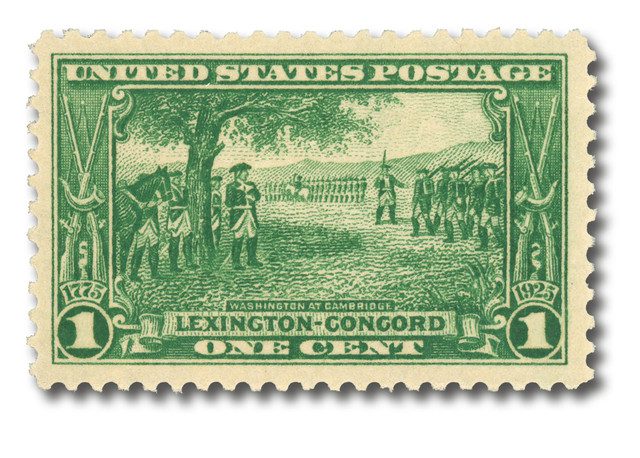
The Americans held the bridge, and exhausted British soldiers headed back to their base in Boston. Swarms of minutemen hid behind stone fences and barns along the route, and inflicted heavy casualties.
The Revolution had begun. America’s Second Continental Congress had to choose a commander-in-chief. It was considered necessary to appoint a Virginian to ensure full southern support for the cause. George Washington, a plantation owner, had led Virginian forces during the French and Indian War when he was a young man. He met all qualifications to lead the Continental Army, had a reputation for dependability, and few political enemies. In June 1775, Congress selected him as supreme commander. Washington protested that he was unqualified, but a few days later he was on his way.
When Washington joined his new command, he did so with tact. Aware that New Englanders would resent a Virginian general, he exerted his authority carefully. At Cambridge, it became evident Washington possessed the leadership qualities to guide America through her fight for Independence.
| FREE printable This Day in History album pages Download a PDF of today’s article. Get a binder or other supplies to create your This Day in History album. |
Discover what else happened on This Day in History.

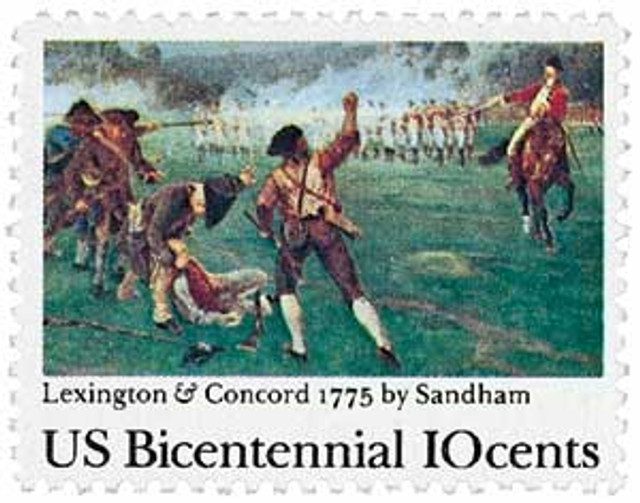
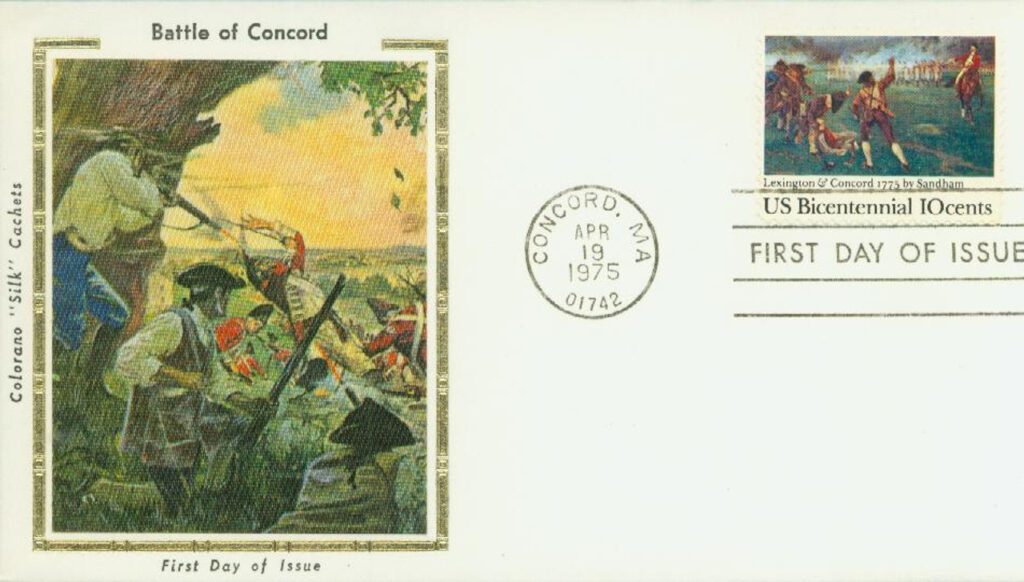
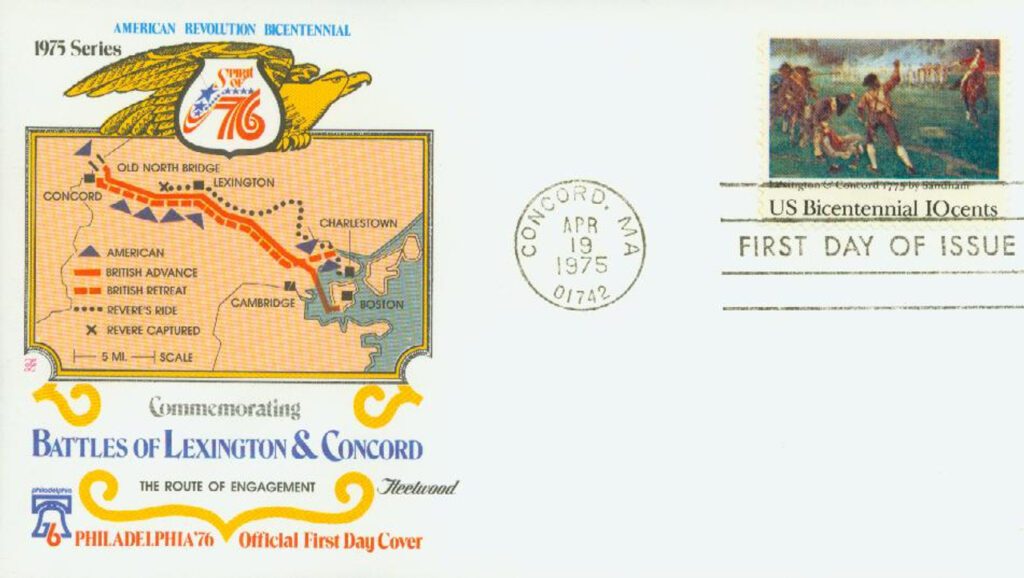
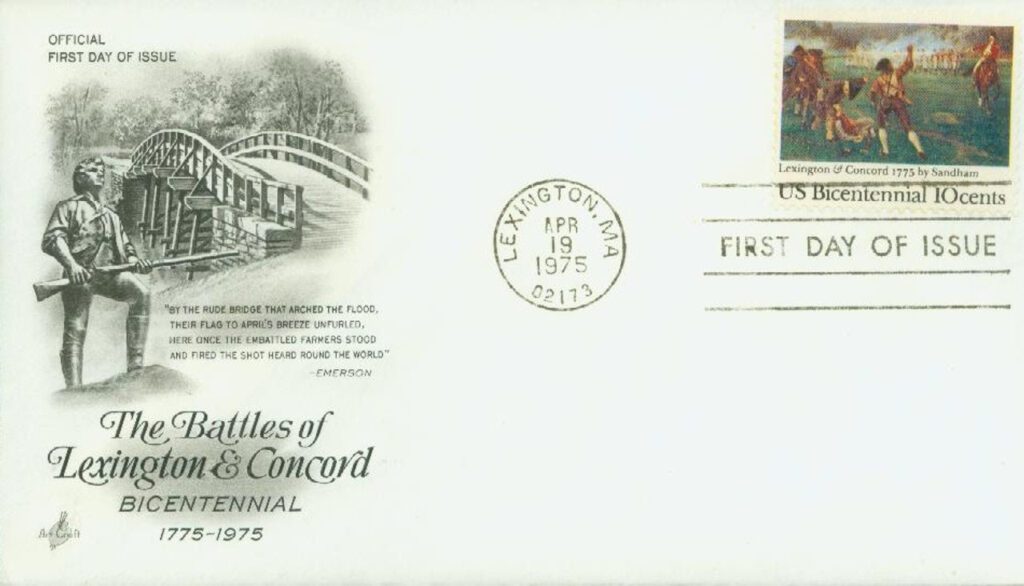

“… the embattled farmers stood, and fired the shot heard round the world.” This lead not only to freedom in America but later France and around the word.
If you are going to delete my comment maybe i should just get off your mailing list
??????
Dan’s original comment was pending approval. Both comments were allowed to post to show good faith.
Fighting for independence it’s still happening today the only thing that has changed is the theater.
Just imagine the courage, patriotism and individual determination it took for untrained farmers, merchants, etc. to stand and face uniformed, armed British regulars for a cause that had not yet really been identified by the colonials. And, imagine the scoffing and amazement of the British soldiers that had to leave their homes and families to sail across the ocean and put down a “rebellion“ by folks they knew to be British subjects.
Ukrainian resistance today;
Russian troops who, no doubt, scoffed at the idea of Ukrainian resistance.